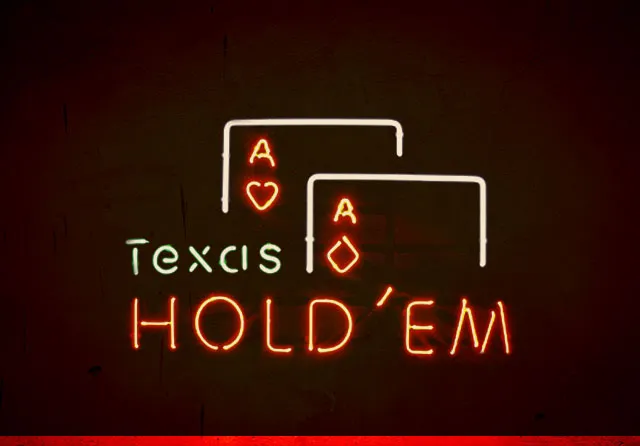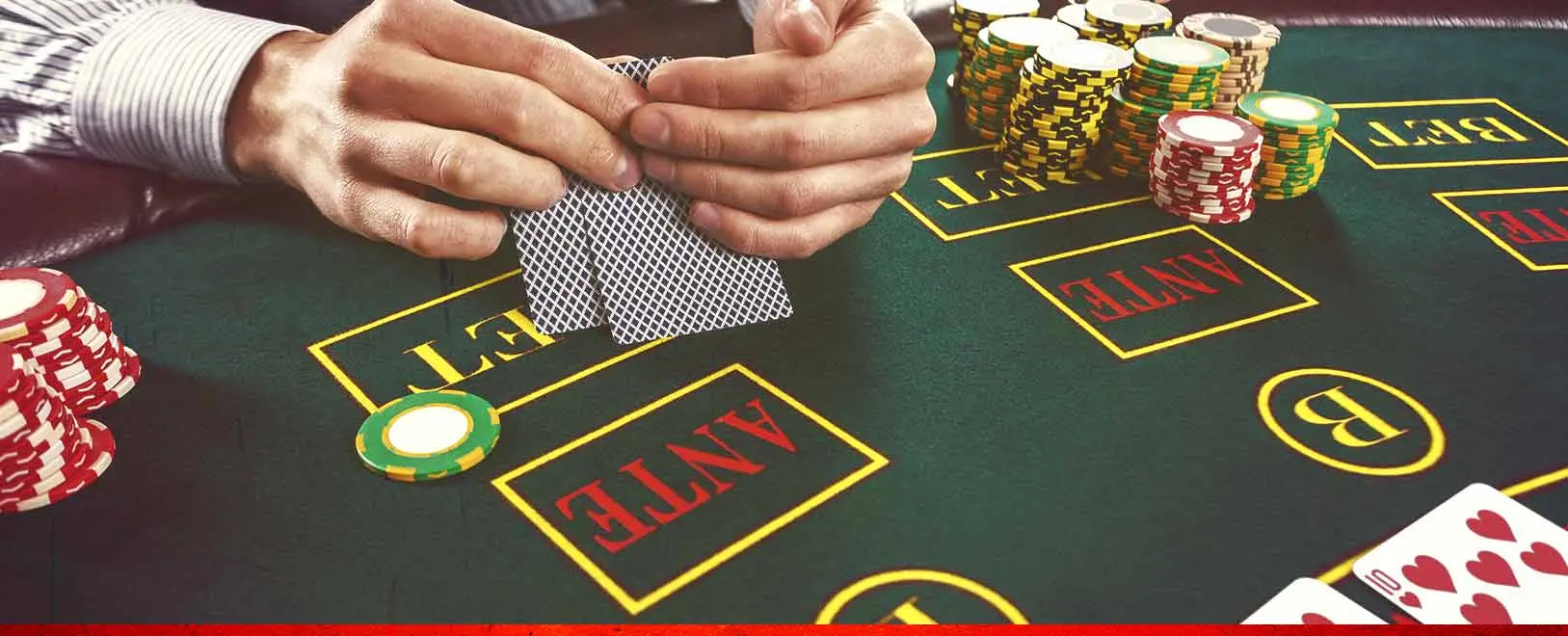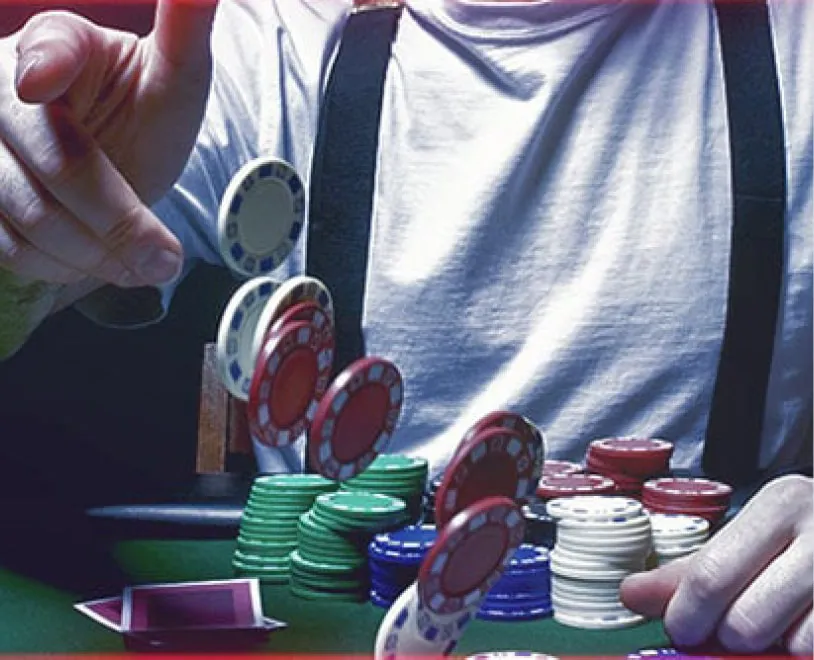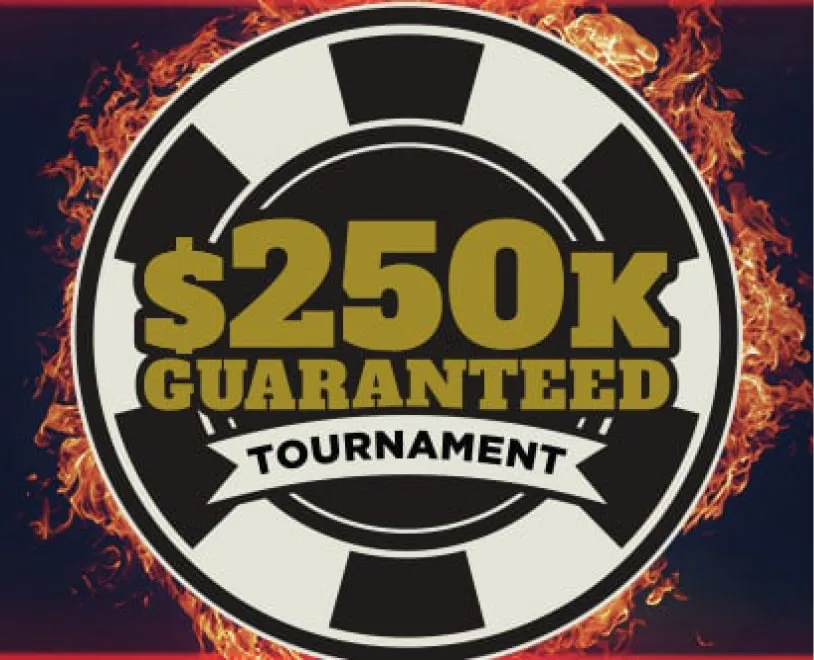
How to Play Texas Hold'em

Poker isn’t just the most popular card game in the world – it’s actually hundreds of games, each slightly different from the rest. Some have become more popular than others; 7-Card Stud was the game of choice back in the mid-1800s, when poker was still relatively new to the Americas, then 5-Card Draw had its turn. Today, thanks to World Series of Poker and the online poker boom that followed, most of the players at Ignition Poker are at the Texas Hold’em tables.
We love all kinds of poker here at Ignition. But our focus is on “community card” games (aka “flop” games), specifically Texas Hold’em, Omaha Hold’em, and Omaha Hi/Lo. These three games are essentially the same, but with enough twists and turns to present their own unique challenge to your poker skills. We’ll help you sharpen those skills here at Ignition, starting with the basic rules everyone needs to know before they play.
Most of the world’s top poker pros are very good at multiple games, even if they usually specialize in a game like Hold’em. All these variants share the same essential basic rules of poker; start by learning these rules, and you’ll be well on your way to mastering any game you like.
The standard “French” deck of playing cards contains 52 cards, 13 each from four different suits (Clubs ♣, Diamonds ♦, Hearts ♥ and Spade ♠), and their ranking from highest to lowest is Ace, King, Queen, Jack, Ten, Nine, Eight, Seven, Six, Five, Four, Three (or “Trey”), and Deuce (only noobs say “Two”). Aces can also count as the lowest card in your hand, and the suits themselves hold no ranking; the King of Hearts and the King of Spades hold the same value. The standard ranking of traditional poker hands applies not only to Texas Hold’em, but also to most popular poker games, including Omaha.
Once you know the standard poker hand rankings, the next step in developing a winning poker strategy is to understand the structure of the game itself. In this section, we explore the structural elements of a typical poker game, whether playing with friends at home or competing in a high-stakes tournament.
The number of players at a poker table can vary between two and 10, depending on the rules of the game or the agreement among the players. The most common types of tables are:
Other table sizes can be found at Ignition Poker, including the 3-max tables in our Jackpot Spin & Go tournaments.
Stakes are essential to the game of poker. Everything’s more exciting when there’s money in the pot to fight over, so at the beginning of each hand, two players make mandatory bets known as “blinds”. There are two blinds in most standard variations of poker:
Antes are another common feature in many poker games, requiring each player at the table (or one designated player, usually the big blind) to contribute a small amount of money to the pot before each hand. You’ll encounter antes at Ignition Poker when you’re playing in a tournament, where the antes are normally introduced later in the game to stimulate player action.
 Chips play a vital role in any game of poker, and they serve two distinct purposes. In cash games, chips function as money; each chip denomination is equivalent to that specific amount of money, which is used to make bets and raises during the game. Using chips in a live game helps to prevent the clutter and security issues of having cash on the table, and ensures that the game runs smoothly.
Chips play a vital role in any game of poker, and they serve two distinct purposes. In cash games, chips function as money; each chip denomination is equivalent to that specific amount of money, which is used to make bets and raises during the game. Using chips in a live game helps to prevent the clutter and security issues of having cash on the table, and ensures that the game runs smoothly.
Chips in tournaments are not the same as in cash poker. They cannot be exchanged for real money, and are used solely to determine everyone’s progress in the specific tournament they’re playing. The tournament continues until one player holds all the chips, and the prize money is then divided among the top finishers according to a predetermined payout structure.
Since those chips are made for betting, the next thing to figure out is how much you’re allowed to bet. Each standard poker variant can be played using one of three different betting structures:
Fixed-Limit poker (or just “Limit poker” for short) restricts the amount that players can bet or raise to two possible sizes: the small bet and the big bet. This can result in a more methodical and structured game, and is ideal for players who are new to poker.
Pot-Limit poker allows players to bet or raise any amount up to the current size of the pot. This structure is most popular in Omaha games, but you’ll see the occasional Pot-Limit Hold’em cash game or tournament being played at Ignition Poker.
When it comes to Hold’em, No-Limit is the preferred choice for most players. This betting structure allows players to bet as many of their chips as they want, at nearly any point in the hand. While this results in bigger pots and more excitement, it can also pose a greater risk for players who don’t manage their bankroll effectively.
 Next, we need to know how much money we’re playing for. Cash game players can sit at tables ranging from micro-stakes as low as a few cents to high stakes worth thousands of dollars. The amount of money a player can bring to the table is restricted by minimum and maximum for their table stakes; at Ignition Poker, you can add more chips to your stack between hands, as long as you’re still within the maximum allowed.
Next, we need to know how much money we’re playing for. Cash game players can sit at tables ranging from micro-stakes as low as a few cents to high stakes worth thousands of dollars. The amount of money a player can bring to the table is restricted by minimum and maximum for their table stakes; at Ignition Poker, you can add more chips to your stack between hands, as long as you’re still within the maximum allowed.
In tournaments, players pay a buy-in and an entry fee to participate, with the buy-ins going towards the prize pool. The prize money will be distributed among the top players according to the final standings, with the winner normally receiving the largest share. Players cannot add more money to their stack during the tournament, except in special cases where re-entries and re-buys are allowed.
There are four potential rounds of betting in every hand of community card poker:
The preflop round starts with the blinds being posted, and the cards (two per player in Hold’em, four in Omaha) dealt face-down around the table clockwise, starting with the player in the small blind. Once the cards are dealt, the player to the left of the big blind has the first turn, then the player to that person’s left, and so on until the player in the big blind.
If the hand isn’t won during the preflop round, the Dealer reveals the first three community cards face-up in the middle of the table; when combined with your two “hole” cards, you now have the five cards you need to make up your poker hand. The player seated to the left of the Dealer has the first turn; this will always be the small blind if they’re in the hand post-flop. Action continues around the table until all the turns are complete or someone wins the pot.
Should the hand continue, the fourth community card will be revealed face-up on the table, and a new betting round begins. This stage (and the card itself) is known as the turn; action continues in the same manner as it does on the flop.
Still no winner on the turn? Then the fifth and last community card – the river – is revealed, and a final betting round takes place. If all the turns are complete and a winner still hasn’t been declared, the remaining players reveal their hole cards in a showdown to determine who gets the pot. In Hold’em and Omaha, the player with the highest-ranking hand takes the entire pot, and in the event of a tie, the pot is split among the players; in Omaha Hi/Lo, the pot is split evenly between the highest and lowest hands – assuming there’s a qualifying Low. More on that in a moment.
A player has several options when the action is on them - meaning it’s their turn. Let’s take a closer look at all the possible plays you can make:
Provided no one else has contributed any money to the pot (other than the blinds) in the current round, a player has the option to check. Essentially, this means betting zero dollars and letting the action continue to the next player.
When a player chooses to fold in a game of poker, it means that they are unwilling to continue fighting for the pot after a bet or raise from their opponent(s). Instead, they “muck” their cards, which are then placed into the discard pile, and they are no longer eligible to participate in the hand.
If no chips (other than the pre-flop blinds) have been added to the pot during the current round, the player has the option to place a bet. The players seated after them must then decide what to do in response. The minimum bet in standard poker games is equivalent to the size of the big blind.
If a player bets in front of you, you have the option of raising that bet. This means putting in a larger amount of chips (at least the minimum for your raise, which is usually the size of the bet in question) than the previous player. If a player in front of you raises, you can re-raise, or re-re-raise. Modern poker players use terms like “3-bet” and “4-bet” to help keep track of all these raises.
Instead of folding or raising, a player can simply choose to “call” a bet/raise by adding an equal amount of chips to the pot as the last player’s bet or raise. Calling can also be done when only the blinds are in play; your call amount is the size of the big blind. Note that any time a player is in the small or big blind, those blinds are considered part of their wagers for the hand; for example, if the preflop action folds around to the small blind in a $1/$2 cash game, they only have to contribute $1, not $2, if they want to open the action by calling.
There are some very specific exceptions to these rules – for example, if a player goes all-in for an amount that’s more than a standard call, but less than a standard bet/raise, the remaining players cannot raise – they can only call or fold. These exceptions are rare, so once you understand the basic plays, you can start building a smart strategy around which plays work best in most situations.
While all the standard poker variants share these fundamentals, there are some key differences that set them apart, so let’s take a moment to explore the three different “flop” games at Ignition Poker:
 Texas Hold’em – especially Limit Hold’em – is a great way to learn how to play. Texas Hold’em rules are straightforward you can play for small amounts of money at a time while you’re still learning the game. You can even practice for free at Ignition’s Play Money tables before you take the plunge and play poker for real money.
Texas Hold’em – especially Limit Hold’em – is a great way to learn how to play. Texas Hold’em rules are straightforward you can play for small amounts of money at a time while you’re still learning the game. You can even practice for free at Ignition’s Play Money tables before you take the plunge and play poker for real money.
When you’re playing Hold’em, you’ll be dealt two “hole” cards, which you’ll combine with any community cards on the table to make your best-possible 5-card poker hand. You can use zero, one or two of your hole cards when doing this – maybe all five community cards on the river will be your best possible hand.
Omaha is the second-most popular type of poker you’ll find at Ignition. Omaha rules are nearly identical to Hold’em, but instead of two-hole cards, you start with four; you also have to use exactly two of those four cards, plus three of the community cards, to make your 5-card hand. This makes it a lot easier to make big hands like full houses, and it makes it even more important for you to have the “nut” hand (the highest-ranking hand, like an Ace-high flush) if you want to win.
As we mentioned in the Omaha Hi-Lo guide, the pot is divided into two halves: one for the player with the highest-ranking hand, and one for the player with the lowest hand. However, to qualify as a Low, the highest-ranking card in your hand can’t be bigger than an Eight. If there is no Low present, the entire pot goes to the player with the High.
Straights and flushes do not count when figuring out your Low; the strongest possible Low in Omaha Hi/Lo is Five-Four-Three-Deuce-Ace (aka “the wheel”), while the weakest is Eight-Seven-Six-Five-Four. The rankings for Low hands can be a bit confusing at first for new players, so consider starting with Omaha and getting comfortable with winning High hands first, then stretch your wings and give Omaha Hi/Lo a spin.
There’s always more to talk about when it comes to poker, but for now, you’ve got the basic building blocks you need to play any of the great games we have waiting for you at Ignition. Make sure to check out our archive of helpful poker strategy articles to find out more about all the games on our menu, and consult our Help guide for more details on the rules and regulations. See you at the tables!
Poker is a card game that involves betting and individual play, where the objective is to have the best possible hand and win the pot.
Poker can be played with as few as two players and up to a maximum of 10 at a single table.
The basic rules of poker govern the way players are dealt cards, how they place bets, and which player wins the pot.
The most popular types of poker games in the world today include Texas Hold’em, Omaha (including Omaha Hi/Lo), 7-Card Stud, and Razz.
A “hand” in poker refers to the cards held by a player, as well as the particular group of betting rounds that takes place after the cards are dealt.
The objective of poker is to win the pot, which is the sum of all the bets made by the players in a hand. The pot is won by either having the best possible hand, or by convincing the other players to fold.
A blind is a forced bet that is made by the two players sitting to the left of the Dealer. The player sitting immediately to the left of the Dealer posts the small blind, and the player to their left posts the big blind.
In games like Texas Hold’em and Omaha, the flop is the second round of betting where three community cards are revealed to all players. The term “flop” is also used to describe the three cards themselves as a group.
The showdown is the final phase of a hand in poker where the remaining players reveal their cards to determine the winner; the player with the best hand takes the pot. Showdowns can also take place earlier in the hand if everyone goes all-in.
To win consistently at poker, players must have a good understanding of the game’s rules and strategies, manage their bankrolls effectively, and make sound decisions based on the cards they hold and the actions of their opponents. Dedicated study and practice are also essential for improving your poker skills.